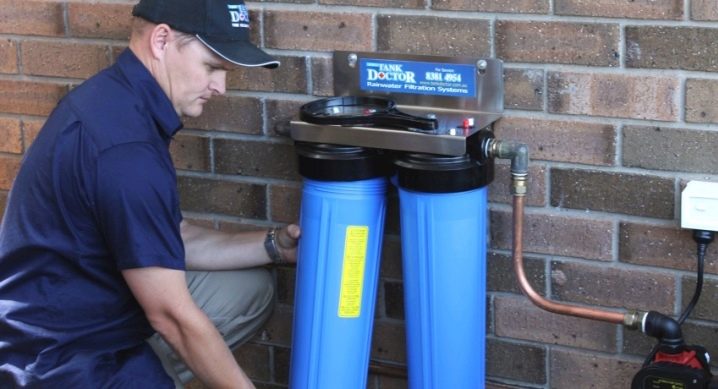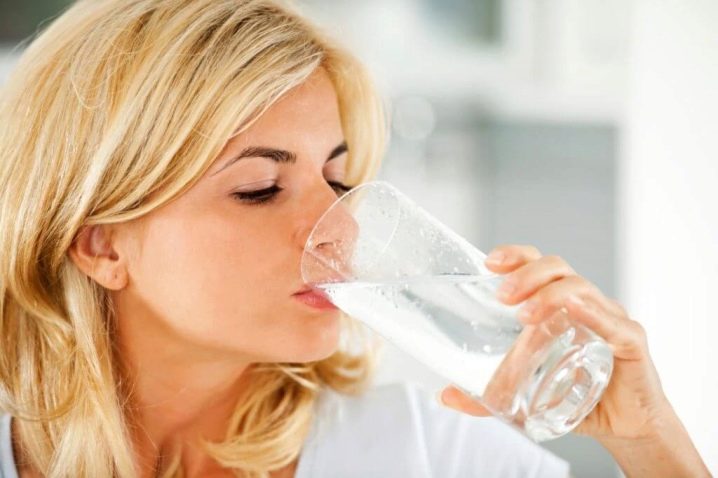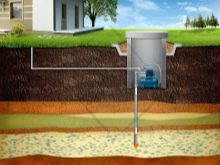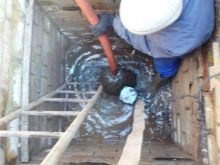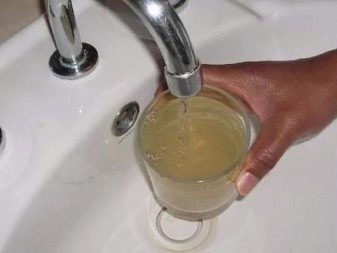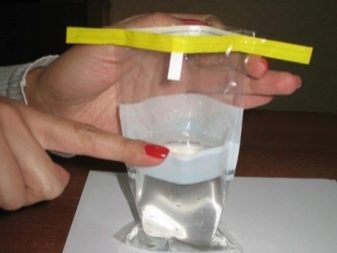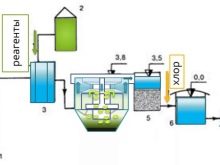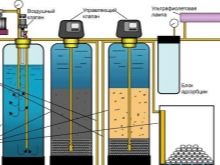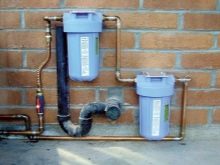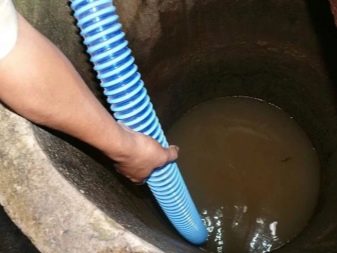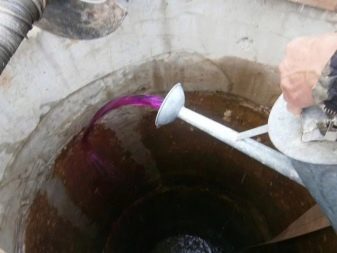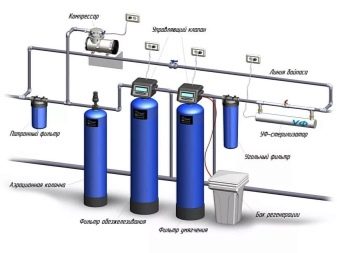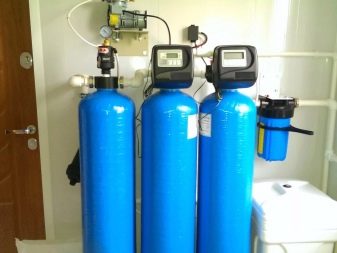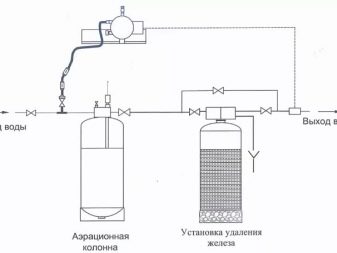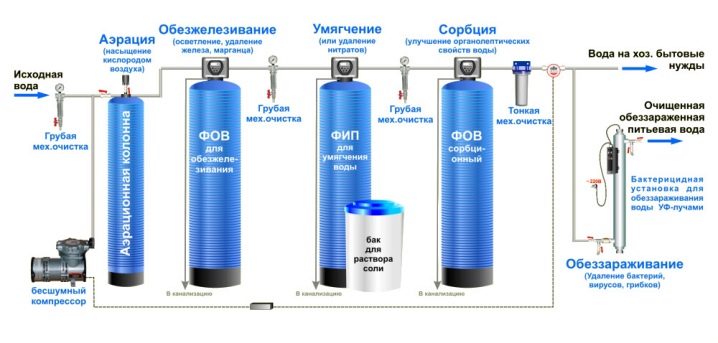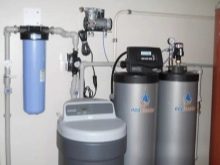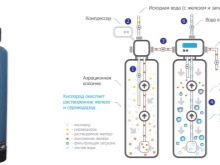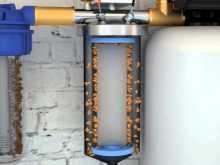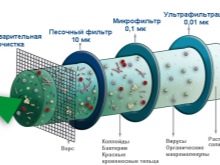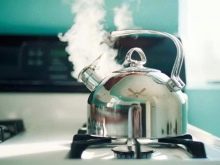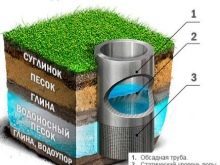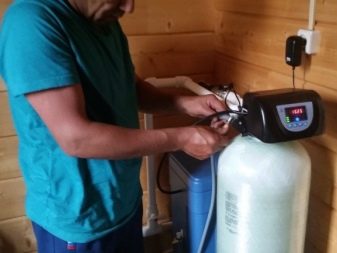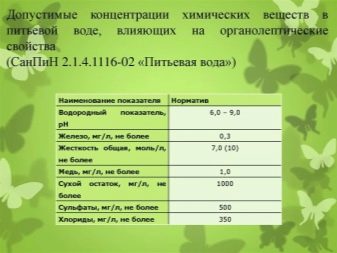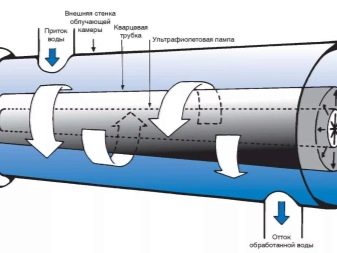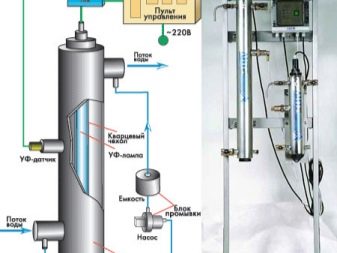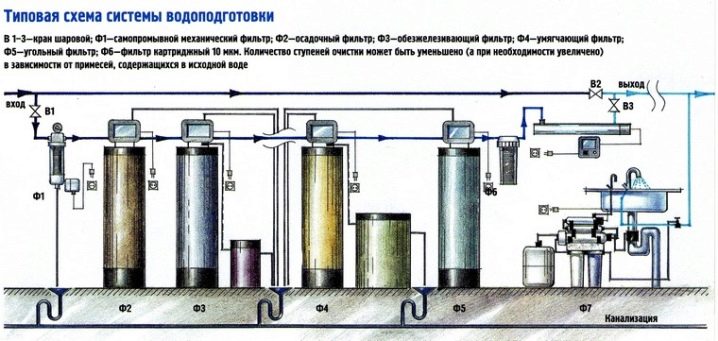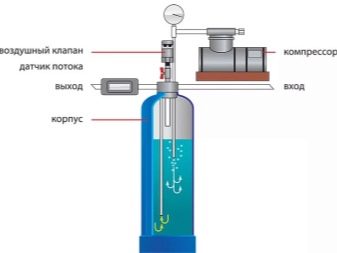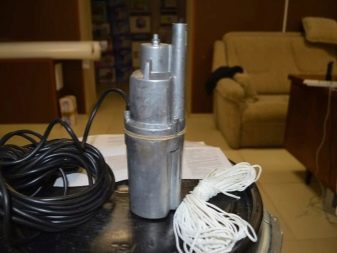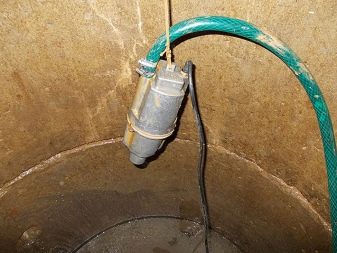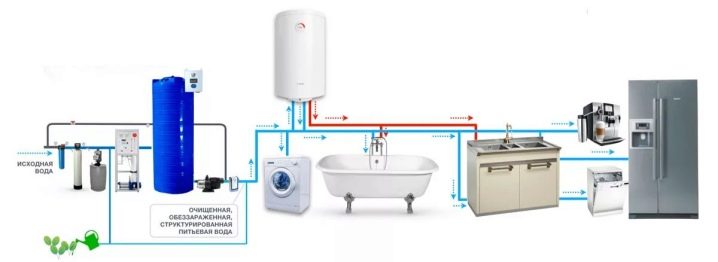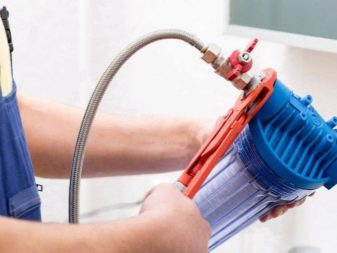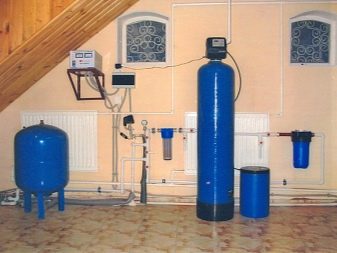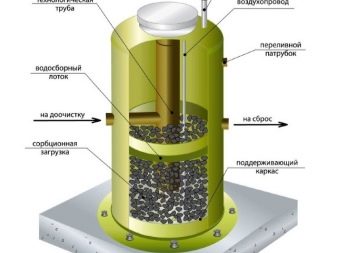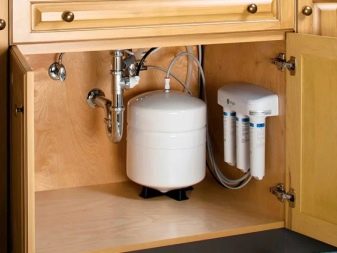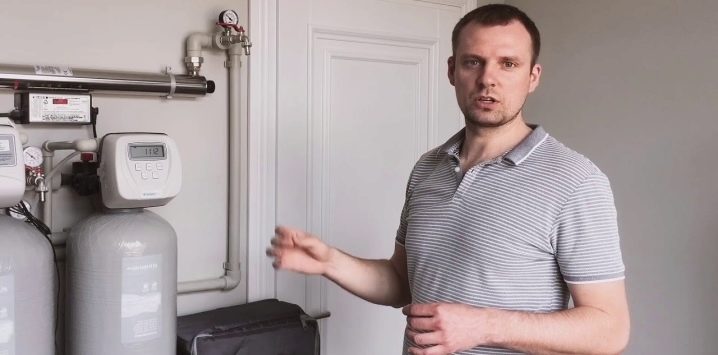Subtleties of the process of water purification from the well
To maintain health, it is important to use only fresh, high-quality water. In order for the body to maintain a normal water-salt balance, doctors recommend drinking a lot - up to 2 liters of pure water every day. It is important to remember that today drinking water can also cause health problems if one neglects the procedure for cleansing it properly. For example, it concerns a drinking source from a well. Let us consider in more detail what is necessary for those who use drinking water from a well in their homes to know.
Special features
Search and preservation of clean drinking water is one of the pressing problems on our planet. Not everyone today trusts urban water services. The acute shortage of a vital resource forces us to find additional ways to filter.For many, the solution becomes its own well, which requires periodic cleaning. After all, water from there must flow into the house daily.
It is worth noting that many people are mistaken if they think that a independently dug well at the site does not require additional troubles in the future. Do not forget about the garbage and waste that accumulate underground, fall into the underground streams through the layered soil. Therefore, it is not recommended to drink “raw” water even from a well. It requires additional filtering.
Why do we need well cleaning?
The water in the freshly drilled well remains short in its pure form. At first, there are almost no impurities. In due course even it is possible to notice visually turbidity, occurrence of a deposit, a specific smell and a light color. In this case, reliable filtering will help.
A number of reasons indicate the need for filtering:
- If you periodically do not clean the well, then it may accumulate substances that will trigger putrefactive processes contribute to the formation of sludge.
- Rare water purification leads to the fact that the liquid begins to acquire a metallic, very unpleasant aftertaste.
- Plumbing, appliances and utensils after a long use of untreated water become yellowish.
- Due to pollution in groundwater, harmful impurities may accumulate in drinking water.
- Silty and muddy sediment in a container with water indicates the development of harmful bacteria in it.
- If you do not periodically filter the water, it will lead to the fact that you may receive the corrosive smell of "rotten eggs" or hydrogen sulfide when you turn on the tap.
Professional equipment is required to check the soil and water. The quality of water will tell the results of research.
For the purpose of the study, water is delivered to the laboratory in order to carry out its full chemical analysis (after all, we need to achieve compliance with sanitary standards). Diagnostics before the filtration procedure should be carried out regularly, since even the replacement of individual elements of the water treatment system with time will not save from contamination, and the water can deteriorate. The results of the analyzes will be prompted to address the main issue - the choice of water treatment systems. To date, there are several types of such systems.
Kinds
In order to normalize the state of water, to soften it, different cleaning methods will be required. The filtering process goes through several stages. The quality of cleaning will largely depend on the sequence of work, on the nature of cleaning, on the density of existing contaminants.
The most common is the mechanical purification of water from the well in order to prevent the occurrence of contaminants in the water supply system. DTo do this, initially a fine-mesh filtering device is installed in the well system so that the bulk of contaminants and impurities remain on it.
In the process of purification by oxidation, it is possible to achieve the dissolution of harmful substances. Subsequently, they can be washed from the bottom and get a fresh taste of well water.
Along with mechanical well cleaning, catalytic clarification can be used. This process leads to the fact that the pollution - both organic and inorganic, dissolve. Water filters will be required.
In the process of complex water purification, the method of deep absorption is used. Water treatment in the country is carried out using sorbents (these can be elements with carbon fiber).After the procedure, you can remove the remnants of sedimentary impurities, remove the unpleasant metallic taste, get rid of hydrogen sulfide odor. In the process, a slit or downhole cleaning method can be used.
In case of serious contamination of a well, it is necessary to pump out the water in advance, if it is a bottom well. For the effectiveness of the procedure, a reverse filtration method is used. In the cleaning process, you should try to remove all contaminants from the surface of the tank walls, clean the sludge tank using a vibration pump (which has a lower intake). These procedures do not require any professional skills. In the cleaning process, special disinfectants (for example, chlorine-containing) are used.
Device
The well water filtration scheme includes regular cleaning and preventive measures. For cleaning use special filtration systems for water treatment with fillers. They are subsequently replaced by new ones. High-quality cleaning of the well from iron impurities is needed to obtain artesian water. Elements of impurities in the form of iron lead to a weakening of the immune system.To cope with the problem, you must adhere to the permissible norms - 0.3 mg per liter. Cleaning is best done in a comprehensive manner.
In order to get rid of the concentration of iron in untreated water, it is important to understand the following points:
- water enters the filter through a hose and is in a special environment where it will undergo several degrees of water treatment;
- soluble elements of iron in the filter become insoluble;
- water through a special substrate of gravel enters the rod, where unnecessary elements are removed from the filtration system;
- iron elements remain in a special compartment of the filtering system, and then simply washed off.
In the process of cleaning through filtration systems, it is not necessary to add any reagents to the water to restore the system. The regeneration process takes place here automatically, through a special control valve, through which a fresh stream of water flows. We should not forget that today there are several types of filtering.
Filtration by aeration is carried out with an oxidizing catalyst. (activated carbon is used). In the cleaning process, a compressor system can be used that enriches water with oxygen due to the aeration element.Coal as a sorbent helps to accelerate chemical reactions of oxidation of iron and contributes to the removal of its sediment.
Filtration using an ionic resin for multicomponent exchange of substances is an alternative treatment for highly contaminated water. When this is done thorough cleaning. The cleaning process uses a sorbent that replaces iron with sodium ions. It is useful for softening water, removing dirt.
For natural filtration, natural minerals (for example, based on manganese dioxide) are used. The resulting reagent oxidizes substances and removes them during the washing process.
Comprehensive filtration of water from the well passes in stages:
- aeration;
- ozonation;
- chlorination;
- removal of contaminant concentrations.
Reagents - a fairly common option for cleaning. You can install filters yourself. Cleaning is carried out if oxidation of iron particles occurs and if they are trapped in the filter housing. Of the effective reagents, calcium hypochloride and chlorine are used, as well as potassium permanganate. Harmful substances are regenerated using tableted salt.
The most effective way to clean a well is oxidation. Particles of zinc and copper, combining with iron, remain in the filter system. Electrochemical methods that help remove corrosive bacteria can be used to clean the well.
What are they cleaning?
Typically, well water is filtered to get rid of sand, clay and peat elements and to soften. In the latter case, a mechanical filtering method using lime and salt liquids helps. The presence of sandy or clayey formations can be eliminated by any means of purification (cleaning is carried out at the level of molecules). If there is no filter, water can and should be defended, and after the formation of a precipitate, boil, and only after that use.
Filtration of large sand soil is carried out through a special water treatment system through system pipes.which are made of steel, and the mesh structure of the system is made of special strength wire. The fine sandy soil is filtered through tubular filters where fine mesh perforation is installed.
Unsuitable water from the well, in addition to nitrates, must also be purified from hydrogen sulfide.Its presence is easy to notice without having a keen sense of smell. A harsh smell indicates a combination of sulfur and toxic gas. Drinking such water leads to serious health problems. The threat is sulphate-reducing bacteria that release hydrogen sulfide. Impurities (for example, with lime) in combination with iron are removed by modern filtration methods.
Cleaning the well from magnesium and calcium salts is an important stage in the effective filtration of water. If its composition exceeds the concentration of salts, this leads to its rigidity. The permissible concentration of salts should remain in the range of 2-3 mg per liter. It is worth noting that salt impurities lead to the formation of strong scale, to corrosion of metallic elements and to the bitter taste of water. The consequences of the use of such water will be urolithiasis, the deposition of kidney stones, and an increase in pressure. To reduce the hardness of the water, it must be boiled, then frozen, and then filtered with resin ions (regeneration with table salt and soda ash).
In addition to the basic filtration procedures for drinking liquids, care must be taken to free it from bacteria and viruses.
The most effective in this case is the usual boiling water. But such a constant fight against bacteria is quite energy intensive. Some filter large volumes of water using chlorine. It kills bacteria, but is harmful to health (especially in large quantities). Through the use of modern technology, purification or filtration against bacteria is carried out through ultraviolet radiation. It is much more effective to destroy bacteria in this way. And the taste of water will not suffer here, all the useful properties of the elements will remain.
How to choose?
It is possible to get high-quality water from a well, if modern liquid filters are used.
In general, a well cleaning process consists of several filtering methods that are needed at certain stages:
- in the course of rough cleaning (for example, removal of sand);
- to soften the water;
- for fine cleaning (nitrates, heavy metals, oil products are removed);
- for processing purposes for disinfection (certain bacteria live in any wells and wells).
In the filtration process, it is important to calculate how productive the house cleaning system is.
Cleaning methods
The main methods of water filtration:
- reagent;
- non-reagent.
In the first case, special elements (oxidizers) are needed to purify water. They react with pollutants (for example, with iron). Reagent cleaning systems are quite affordable today, but they require a lot of labor. Accordingly, this method of well cleaning is more suitable for household water, but not for drinking.
The method of reagent-free well cleaning is considered the most common and effective. Although the procedure is more expensive, as in the process requires an air compressor and aeration column. However, when operating large power consumption is not required, since the filters are designed for long-term operation. Water after such purification is quite suitable for drinking and household needs.
How to do?
The main task of filtration is to make the water healthy and tasty. To this end, you can purify the water or with your own hands, or with the help of modern technology. The easiest, but effective way to purify water, if there is no special equipment, is to use a vibration pump.Of course, the cleaning procedure in this case will become more time consuming, it will take time.
A simple inventory is used for the cleaning procedure:
- a long thin cord (or cable), a pin of metal (or a piece of reinforcement) is attached to it;
- the pin is lowered into the well and rises to the surface to loosen the silt at the bottom;
- after which a vibration pump is installed on the bottom of the well, with which the sediment is pumped out.
In order to completely clean the well, the procedure is performed repeatedly. If it is possible to carry out both procedures at once, then both the pin and the vibration pump are lowered into the well. Thus the cleaning process is accelerated (loosening and cleaning). At the same time the pump is installed at a higher level relative to the ripper. Practice shows that this cleaning method is the simplest and most reliable. However, the process must constantly monitor and adjust the progress of work. The rate of cleaning is also affected by the degree of contamination of the well.
There are ways to self-filter water from impurities.
The scheme of such cleaning is suitable for a country house, and it looks like this:
- the primary filtering option is carried out (rough method);
- installed mechanical unit (for fine cleaning);
- a filter is installed to protect against hydrogen sulfide odor and against iron impurities;
- the mechanical cleaning unit is installed at the final stage;
- anti-scale filter is installed.
During the initial cleaning of the well, in order to bring potable water into the house, mechanical filters are used, which are mounted at the place where the first water supply valve is located (it is located in front of the pump station and does not reach the hydraulic tank). The filter can also be installed on the intake manifold (on a submersible pump), behind the ejector check valve (on the pump station). Mechanical filters are capable of holding large sand elements (from sand to small stones), which are drawn into the pipe during in-line fluid intake. The existing grid (with cells of 3x3 mm or 2x2 mm) protects against the ingress of excess elements, the water becomes cleaner. At the same time, the cameras and blades in the pumping station are kept in working condition.
A mechanical filter can be installed at the outlet of the system (on the hydraulic tank or pumping station). Built-in cassette with cleaning function allows you to "withdraw" up to 90 percent of unnecessary elements. Water is passed through the subsequent mechanical filter and becomes noticeably more transparent and cleaner. It can be safely used for technical purposes (for example, for watering). But it can still contain harmful impurities and have an unpleasant taste and smell. In this case, you will need an additional cleaning unit, which eliminates the impurities of iron, eliminates the bitter taste and smell of hydrogen sulfide.
For filtration, a special mechanical module for final cleaning is also used, with the help of which you can get rid of scale. The filter is placed behind the unit system to ensure fine cleaning. Oxygen binds iron ions and stores chemical elements in resins that break down hydrogen sulfide molecules. The resulting residue is deposited in the system of the second level of filtration. It is quite possible to use the obtained water for sanitary needs (for example, for a toilet tank), in a faucet in the kitchen, in a washing machine. However, before using for cooking water must be filtered and boiled.Such liquid is unsuitable for drinking until it passes the cleaning of microorganisms.
For the purification of drinking water from the well, simpler systems are used. They purify the liquid from microorganisms and unnecessary organic matter.
The following technologies are used for cleaning:
- absorption;
- ultraviolet disinfection;
- disinfection.
Special disinfection is usually not performed today, as chlorine is used for this purpose. This element greatly destroys the composition of the liquid, its taste. For disinfection is used the method of absorption (through a carbon filter) or ultraviolet irradiation. Special modules are mounted into the system and pass into a drinking faucet, usually located under the sink. In order for the system to function normally, you need an ordinary electrical connection, which is very convenient. An alternative method of cleaning is a membrane unit (type of filtration is reverse osmosis). Such a membrane (or, as it is also called, a film in which one side remains permeable) is able to pass fine particles through (up to 0.01 mm). But this method is such that only one of the three available liters remains, and two go down the drain.
Tips and tricks
Independence from the central water supply and autonomy of the well cleaning system have their own strengths and weaknesses. On the one hand, the desire to have autonomous water supply is understandable. On the other hand, you need to know how and where to place the well, how to exploit it and keep it in proper form. Water from the well requires regular cleaning. For these purposes, a variety of modern filters are invented, which makes it possible to choose the appropriate cleaning method.
When choosing a filter for cleaning you should pay attention to the following points:
- the filter should consist of special elements and chemical reagents;
- you need to pay attention to the brand of the manufacturer of the device, then to resolve the issue with filling in it of special compositions;
- it is necessary to make sure that the device complies with sanitary standards and to get acquainted with quality certificates.
Purified water enters not only the drinking tap, but also the heating system. Purify the water to the desired condition will help salt filters. This is a rational, less costly and effective method of cleaning for country houses. It is suitable for buildings equipped with gas boilers, various household appliances.If you buy an appliance with the label “filter for a washing machine,” it can also be used to connect to other appliances. However, this filter is not suitable for connection to the general water supply system in a private house.
About water purification system Aquaschit see below.
